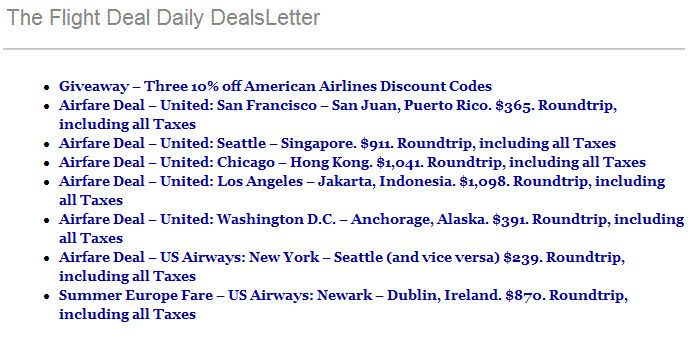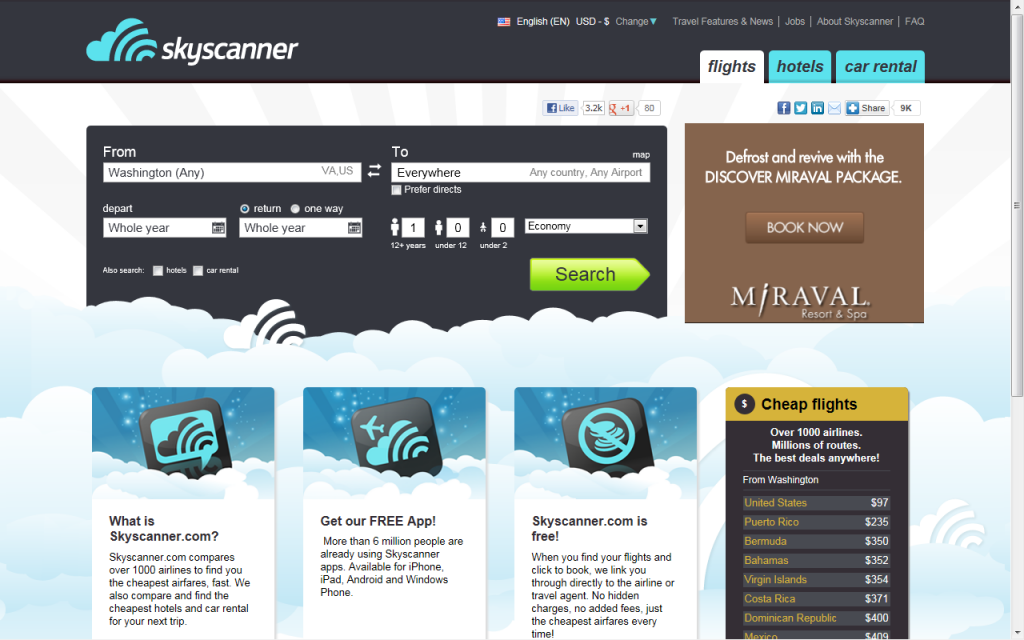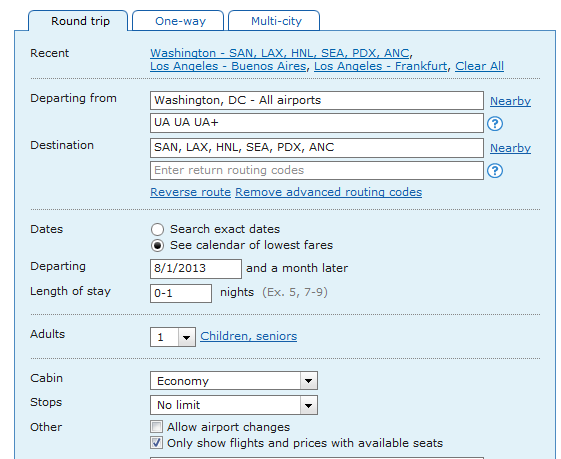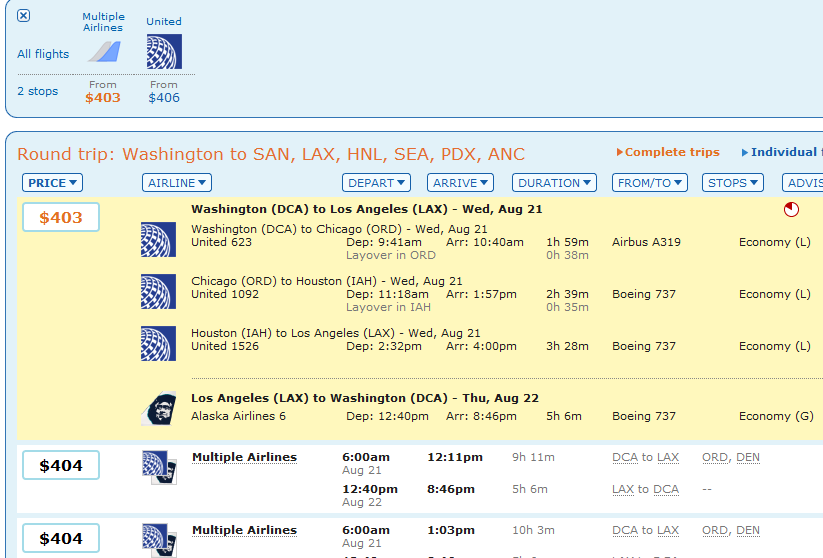Mileage Running – No Particular Place to Go
I find that this subject, more than any other, is the most popular one that we blog about. My blog about this recently is the most popular I have written about to date. Although taking a cheap flight to earn miles seems like fun, I think you need to decide what your level of pain is before attempting. I got a kick out of one of my BA friends, Seth, on his report for a recent mileage run which lasted 60 hours. Talk about an Airborne Ranger!
It all depends on how much time you have to spend earning those miles. Personally, I much prefer to take long weekends and actually enjoy a day or two at my destination before getting back on the plane. Purists will tell you that this is not true mileage running, which dictates that you not even leave the airport, but you decide for yourself what you want to do. I also find it a lot easier on the body to take a break before getting back on a 12 hour flight.
Another caveat against mileage running is that it is only reasonable if you are already close to a goal. So if you are going to be at 85,000 EQM and know that for a little more money and effort, you can reach 100,000 to get top status and a bunch of benefits like Systemwide Upgrades (SWUs) which will get you upgraded to Business Class on those long international flights, then spending a few days and $500 seems like a good deal. People will often do the math and say that the cost difference to get those upgrades is worth it because the fare difference is probably over $1000 per ticket. But you need to ask yourself would you pay $1000 if the airline gave you that option for an upgrade? If not, then the upgrades are worth what you value them at and nothing more. If a guy is 6′-8″ he probably values them a lot, a person who just takes an Ambien and wakes up on the other side of the ocean, probably not so much.
I will point out that a neccesary tool for doing mileage runs is not a search engine, but a mapping tool. Great Circle Mapper will easily show the miles you will get with each route, although is will not account for the minimum 500 miles per segment most airlines grant. Keep it as aminimized window when you are searching so you can pull it up and see how various stops in between add to your total miles earned.
Now that I have given you fair warning, let’s show you how to do one. If you like fishing, you’ll like mileage running since it requires a lot of casting about to get a good catch. Let’s first examine tools to do that fishing with. The first that I really like is The Flight Deal. This is a subscription service that sends you a list of flights that are all under 6 cents per mile (CPM).
Note that we are talking about EQM, not RDM when calculating CPM. A good mileage run is one considered to be 4 CPM or lower although that is a judgement call and you have to decide if a 5 CPM flight fits your financial and schedule parameters. I look forward their daily newsletter and look to seee if there is anyhting interesting that I can take advantage of. In the list above, I see the Washington, D.C. – Anchorage fare. That would be a good candidate since those are two cities that are far apart and I can search for stops at intermediate cities along the way to bump up the miles for about the same price. I grabbed this same flight at a slightly lower fare six weeks ago and turned it into a 3.7 CPM mileage run for about 9,000 EQM. This is my daily search tool that I put no effort in.
For searching for a mileage run with a little effort, I like to use the Skyscanner App. This is also a fun tool for when you do not have your laptop and want to muse about what cheap flights are out there. The thing to do on the App is to plug in your home airport and list the destination as “Everywhere”. You can define days of flying or leave them blank to see everything.
A last good technique is to use ITA as we previously discussed, but use some parameters to search for flights to a bunch of interesting cities. Put in you home airport as the “Departing from”, then list a bunch of far away cities as your destination. Another step is that you can call out not only the airline, but the number of segments you want. Just repeat the airline code the number of times you want. Note that you are probably driving the price up if you have too many segments, so experiment. I am going to show you how it works by putting in the rules for one direction, but not the other.
And our results are:
See how you have a three segment United flight in one direction, but ITA chose Alaska for the return. Obviously, this is not what you want to do so put the airline code for each direction. Play around with it and then you can write down the results and proceed to the airline website for booking it.
In addition to what I have said above, I would like to refer you to a couple of BA bloggers that go into even more detail on using ITA for mileage runs. The first is that Airborne Ranger Seth that I mentioned in the beginning of this article. Read his post here. Also, I recommend Lucky’s One Mile at a Time post here.
Once you have a good run in mind, take your notes to the airlines booking site. Use the Multi-city tab or button found on most airlines flight searches. Then enter each segment. For example, in the ITA search above, you would put in DCA-ORD, ORD-IAH, and IAH-LAX. Then do the same for the return flight. You can still play around a little with the intermediate cities to see if you can get a few more miles for the same price. Focus on routing through the hubs for your airline. You can refer back to the Great Circle Mapper to find which routes give more miles. Don’t forget the minimum 500 miles per segment and use this to your advantage. Again, using the example above, you might increase your mileage by routing DCA-EWR initially which is only 199 miles, but grants you 500. If you can stretch the original flight miles by 25% more, you are doing good. Run your CPM calc and see if a little bit more cost is worth the extra miles.
Good luck with this and let me know what question you have. I know it is complicated, but you can make it work if you just put in the effort.




